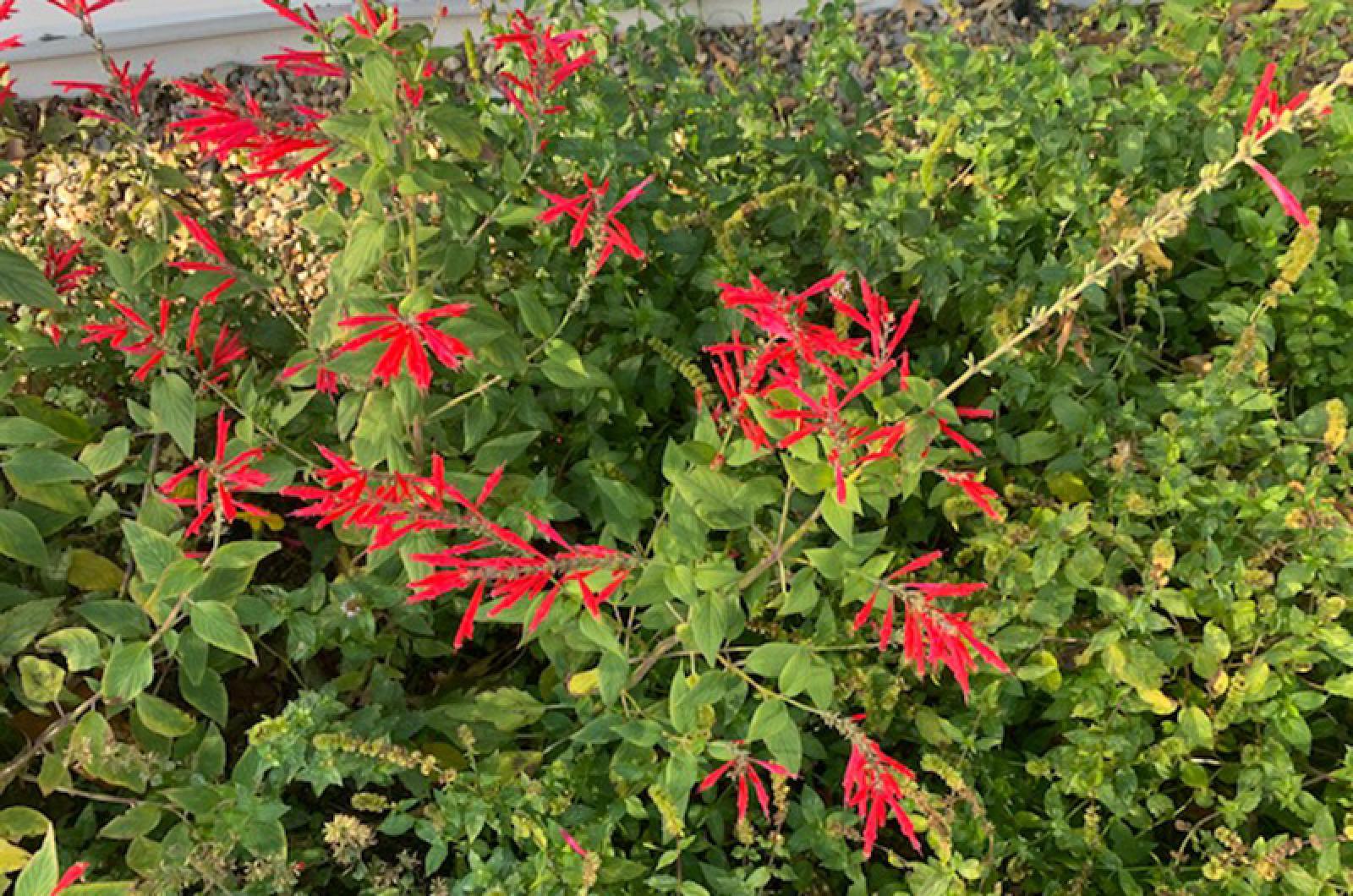If you want flowers in November, take this sage advice: plant salvia elegans.
One of many salvia varieties, this plant, commonly called pineapple sage, provides beautiful blooms late into the season and will keep going florally until a hard freeze. Even with the cold days and nights we have had, my pineapple sage is still blooming. Its tubular and delicate red flowers are the only bright spot in the garden.
While in no way related to the tropical fruit, the leaves of this plant smell, strangely enough, like pineapple when crushed. And though a kin (and akin) to sage, it lacks visual and scent similarities to the culinary herb.
Native to Central America, pineapple sage has become a common ornamental in this country. It was first imported to the United States in the late 1800s. In more southern regions, it is a perennial, though here is an annual, unable to winter over in our current, though changing, climate. Cold hardy to 20 degrees Fahrenheit, it is quite hearty.
That can be good, not only for our visual appreciation as the landscape browns. Those cardinal-red blooms are a food source for fall migrating hummingbirds, butterflies and other pollinators. A hummingbird, reported last week by Penny Uhlendorf, benefits from this type of persistence.
The blossoms are a feast for the eyes. Besides feeding wildlife, they are edible and useful for food and can nourish humans as well. Creative gardeners and cooks have come up with a variety of ways to use the fall flowers. The taste has been compared to honeysuckle.
Add them to salads or as a garnish for a splash of color. Or try these dishes that will be brightened by their inclusion: jelly, smoothies, sorbets, or flavored vinegar. Embedding flowers in ice cubes for drinks has even been suggested.
For your skin, consider a pineapple sage scrub: just add sugar or salt and some coconut or other oil.
No need to forgo the scented leaves, either. As a culinary curiosity, they can be employed for tea, in a potpourri, as a garnish, and, most intriguingly, layered in sugar to add a sweet flavor. Keep in mind those leaves do not have a similar taste and use as pineapples or common sage. They do well in fruity and sweet, rather than savory, dishes.
This plant provides physical benefits to go along with its mood-enhancing capabilities. The red flowers contain anthocyanins, which have antimicrobial and antioxidant properties. Mexican medicinal traditions employ pineapple sage to lessen anxiety, treat insomnia and hypertension, and as an antidepressant. As a cousin to mint, it also is believed to aid in digestion.
In good taste any way you enjoy it; pineapple sage is more than just low-hanging fruit to combat the darkening days.
Suzan Bellincampi is islands director for Felix Neck Wildlife Sanctuary in Edgartown and the Nantucket Wildlife Sanctuaries. She is also the author of Martha’s Vineyard: A Field Guide to Island Nature and The Nature of Martha’s Vineyard.




Comments
Comment policy »